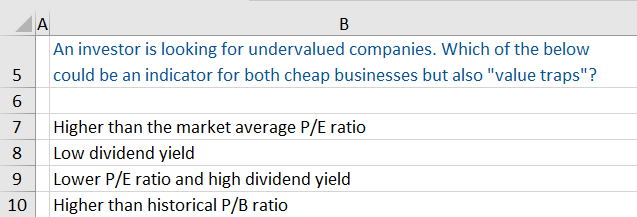Value Investing
June 28, 2021
What is “Value Investing”?
Value investing is an investment philosophy that involves fundamental company analysis and selecting stocks that are perceived to be trading at a discount to their fair value. Typically, value investors look for businesses trading on relatively inexpensive valuations, such as low revenue or asset multiples. These may occur as a result of short-term disruption and an overreaction by the market. Most value investors have a long-term horizon and do not hesitate to take a contrarian approach in their hunt for ‘unloved’ or ‘underperforming’ stocks. One of the most popular proponents of this style of investing is Warren Buffett.
Key Learning Points
- Value investing is an investment style where investors look for quality companies that trade on relatively inexpensive valuations
- It requires solid fundamental analysis in order to determine the company’s fair (also known as intrinsic) value
- Typically, value companies can trade below their intrinsic value as a result of short-term disappointment, for example missing profit estimates, to which the market is perceived to overreact
- In addition to the potential recovery in share price, value stocks tend to pay dividends which makes them attractive for income investors
How Does Value Investing Work?
Most value investors believe that both very disappointing and very strong company profits tend to mean revert over the long-term. Therefore, a short-term disruption in profit streams should not be as disastrous as the market believes. Over the long term, the effect should even out and be minimal. However, this is clearly not the case for all companies – for example Enron experienced its profits going south and never managed to recover.
In this regard, value investors seek to discover quality businesses and exploit any short-term market behavior. But in order to discover such a firm, value investors go through the company’s accounts and try to determine its fair price or intrinsic value. Investors seek to establish whether the company’s balance sheet is in good health and if the present value of future cash flows offers an attractive entry opportunity to buy the stock.
There are various financial ratios that can be used to determine if a company is trading below its fair value, but it should be stressed that quite often this is a range rather than a particular number. For example, investors look at ratios such as price to earnings (or P/E), price to book (P/B) and dividend yield. Trading on a lower P/E or P/B multiples may signal that a stock is undervalued, where higher dividend yield could also suggest that the company is trying to compensate its investors for a decline in its share price. However, it is important to consider the average trading multiples for the sector, the historic performance of the stock and its peers plus the underlying market and macroeconomic conditions.
What Are the Risks?
Value investors believe that the market is not efficient and current share prices do not always reflect all available information. Therefore, market inefficiencies could be exploited to gain returns, but a further decline in share price may cause financial losses. These stocks are known as “value traps” and typically trade at attractive multiples relative to history and offer higher yields, but fail to demonstrate material improvements over time.
The value philosophy requires a long-term investment horizon and could be best utilized in a portfolio when blended with “growth” stocks in order to achieve optimal portfolio diversification.
Additional Resources
Price to Earnings Ratio (P/E Ratio)
Price-to-Book Ratio (P/B Ratio)
